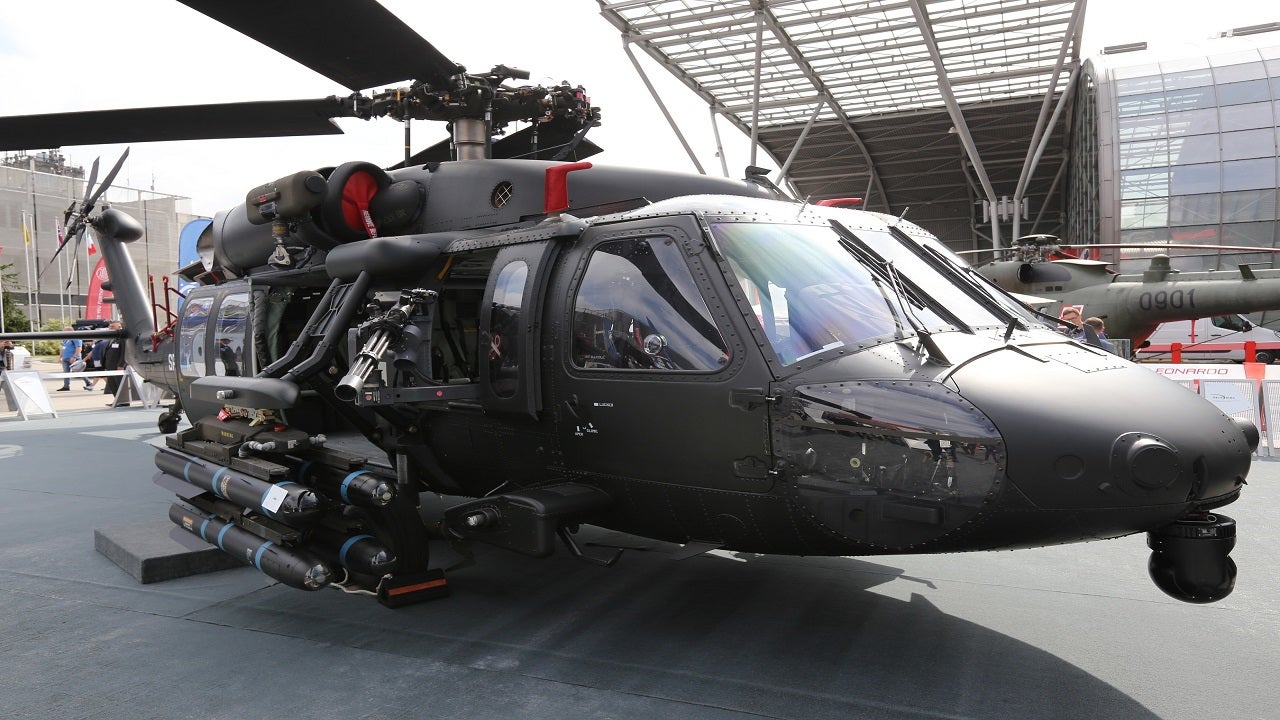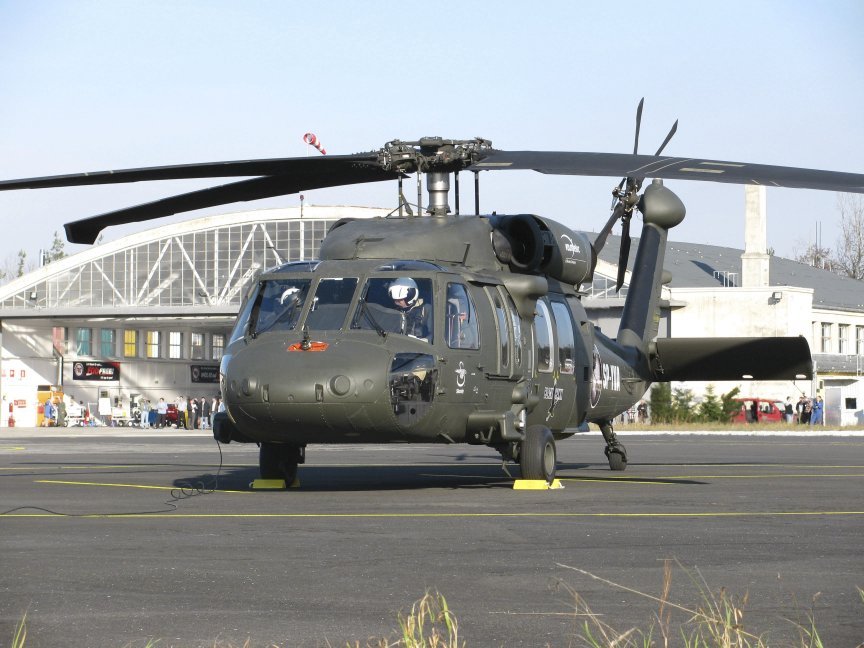Sikorsky S 70: Enhancing Helicopter Performance and Adaptability
High-Performance Multi-Role Rotorcraft Featuring Advanced Cockpit Technologies and Integrated Sensing Unit Solutions
The realm of rotorcraft innovation has actually seen significant advancements in recent times, particularly in the world of high-performance multi-role rotorcraft outfitted with sophisticated cockpit innovations and effortlessly incorporated sensing unit systems. These innovations have not only increased the functional abilities of rotorcraft but have actually also substantially impacted modern aeronautics procedures on numerous fronts. From improved mission flexibility to improved functional effectiveness, the convergence of advanced cabin modern technologies and integrated sensor systems has actually introduced a new era of opportunities for rotorcraft applications. In the following conversation, we will certainly explore the advancement of rotorcraft modern technology, look into the world of advanced cabin advancements, and analyze the implications of incorporated sensor systems on the functional flexibility and efficiency of modern-day rotorcraft.
Evolution of Rotorcraft Innovation
The development of rotorcraft modern technology has actually been marked by considerable improvements in the rules of aerodynamics, products, and propulsion systems, shaping the capabilities and performance of modern rotorcraft. In addition, advancements in propulsion systems, consisting of extra effective engines and cutting-edge propulsion technologies, have made it possible for rotorcraft to attain greater altitudes, faster speeds, and greater hauls.
These improvements have not only transformed the capabilities of rotorcraft yet have actually likewise expanded their applications across numerous markets, including military, business, and emergency situation services. The continual advancement of rotorcraft innovation remains to drive innovation in the area, pushing the boundaries of what is feasible and forming the future of upright flight.
Advanced Cabin Innovations
Building upon the fundamental innovations in aerodynamics, materials, and propulsion systems, the world of rotorcraft technology currently moves focus in the direction of introducing Advanced Cockpit Innovations. The assimilation of innovative technologies within the cabin environment plays a critical role in enhancing the functional capacities, safety, and effectiveness of modern rotorcraft. sikorsky s 70. Advanced Cabin Innovations incorporate a vast range of functions designed to give pilots with improved situational recognition, streamlined data monitoring, and user-friendly control user interfaces
One of the crucial developments in cabin design is the application of glass cabins, which replace standard analog gauges with high-resolution screens. These electronic systems offer adjustable formats, real-time information integration, and enhanced readability, making it possible for pilots to access important details at a glance. Progressed avionics systems, such as fly-by-wire controls and increased reality display screens, are revolutionizing just how pilots interact with the airplane, permitting for precise control and enhanced decision-making capabilities.


Including innovative cabin advancements not only enhances pilot efficiency however also adds to total goal efficiency and safety in complex functional atmospheres. By leveraging cutting edge technologies within the cabin, rotorcraft producers are establishing brand-new standards for functional excellence and goal success.
Integrated Sensor Systems
With the advancement of rotorcraft innovation, the integration of innovative Integrated Sensor Systems has actually ended up being critical in enhancing functional efficiency and safety. These Integrated Sensing unit Solutions include a vast range of modern technologies that provide important data for numerous functions such as navigation, security, targeting, and environmental tracking. By seamlessly integrating sensing units like radars, cameras, lidar, and infrared systems into rotorcraft, drivers can take advantage of boosted situational understanding, boosted objective capabilities, and minimized pilot workload.
One trick benefit of Integrated Sensor Solutions is their capability to gather real-time data and supply workable insights to pilots and objective drivers. For instance, progressed radar systems can discover and track targets over long ranges, allowing for very early threat discovery and reliable action preparation. Additionally, integrating electro-optical and infrared cams makes it possible for rotorcraft to perform reconnaissance and surveillance missions with precision and accuracy.
In essence, the integration of innovative sensor innovations into rotorcraft not only improves functional effectiveness however likewise adds significantly to overall mission success and staff safety and security. As rotorcraft proceed to advance, the duty of Integrated Sensing unit Solution will definitely remain at the center of advancement in the aerospace industry.
Operational Adaptability and Performance
Enhancing functional adaptability and efficiency in rotorcraft is an all-natural progression from the assimilation of sophisticated Integrated Sensor Solutions. By leveraging the information and insights offered by these advanced sensing unit systems, rotorcraft can maximize their performance throughout different missions and settings.
Operational versatility incorporates the capability of rotorcraft to adapt to various functions and circumstances effectively. With advanced cabin innovations and integrated sensing unit systems, rotorcraft can perfectly change between jobs such as search and rescue, medical emptying, monitoring, and more. This convenience improves the rotorcraft's capacity to satisfy diverse operational demands without needing extensive reconfiguration.
Performance in rotorcraft operations is critical for making the most of goal effectiveness and source utilization. Integrated sensor systems play a crucial role in boosting operational effectiveness by giving real-time data on climate condition, terrain mapping, target monitoring, and extra. This information allows pilots to make informed choices swiftly, maximize trip courses, preserve fuel, and boost total mission productivity.
Effect On Modern Aviation Operations

Additionally, the assimilation of sophisticated sensing units facilitates boosted mission planning and implementation, making it possible for rotorcraft to perform a vast array of tasks with enhanced accuracy. From search and rescue procedures to aerial firefighting and police objectives, the YOURURL.com capabilities of modern rotorcraft equipped with advanced cabin innovations and integrated sensor systems are unrivaled.
Moreover, the impact of these developments prolongs past functional effectiveness to cost-effectiveness and sustainability. By maximizing trip courses, gas usage, and upkeep schedules, high-performance rotorcraft geared up with advanced cockpit technologies and sensors add to minimizing operational costs and ecological impact, making them essential possessions in modern air travel procedures.
Final Thought
Finally, the high-performance multi-role rotorcraft with sophisticated cabin technologies and integrated sensing unit systems represents a considerable evolution in aeronautics modern technology. These technologies improve operational flexibility and performance, eventually influencing contemporary aviation procedures in a positive way. The combination of these sophisticated innovations enables for enhanced abilities and performance in various mission scenarios, showcasing the continued advancement of rotorcraft technology in the aeronautics sector.
The realm of rotorcraft technology has seen remarkable developments in recent times, particularly in the world of high-performance multi-role rotorcraft geared up with sophisticated cockpit innovations and effortlessly incorporated sensor systems. From enhanced objective flexibility to enhanced operational effectiveness, the merging of sophisticated cockpit innovations and integrated sensor systems has actually ushered in a new age of opportunities for rotorcraft applications. In the following discussion, we will check out the evolution of rotorcraft technology, delve into the realm of advanced cabin advancements, and examine the effects of integrated sensor systems on the functional adaptability and performance of modern-day rotorcraft.
"/>